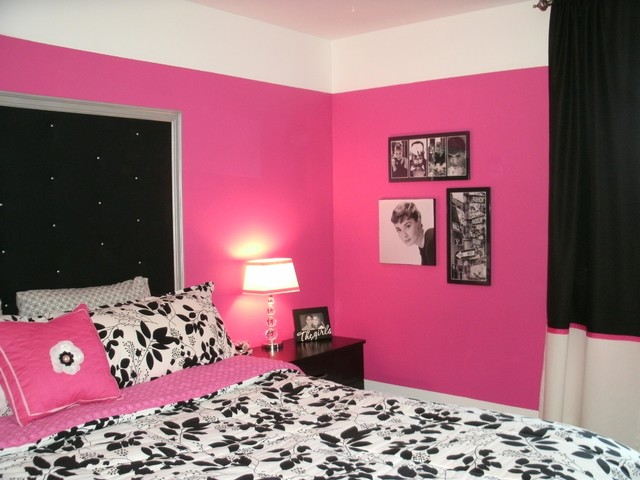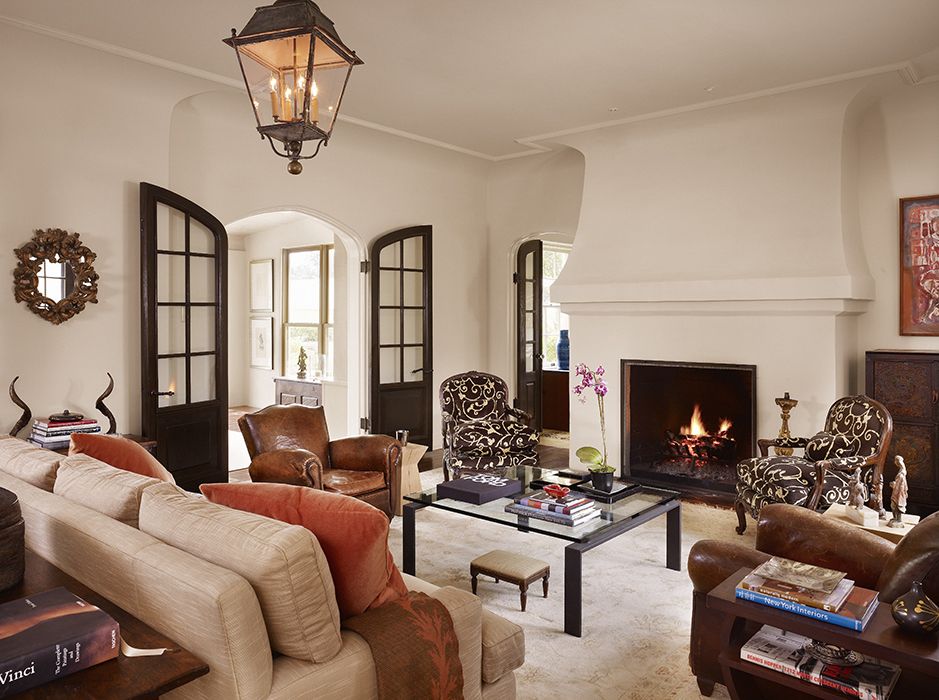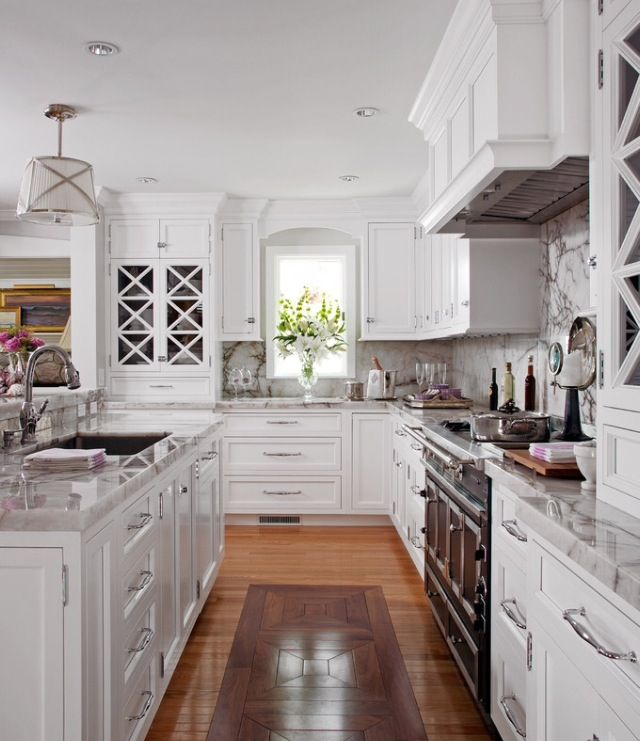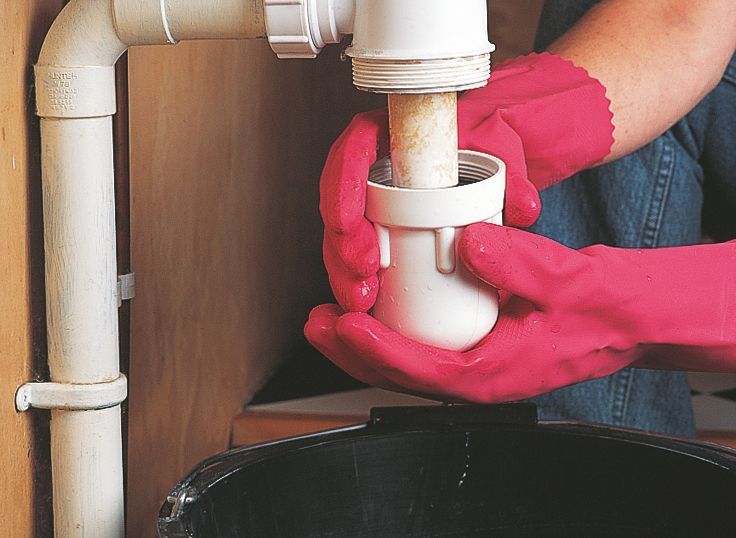Are home theaters still popular
Why Home Theaters Are Still All the Rage After Covid
6 Reasons Americans are still choosing to build home theaters, even as movie theaters have reopened.
Restrictions have lifted, and more people have been enjoying their evenings at the movie theater again. This may lead people to believe that the popularity of home theaters should be on the decline. But what has been the real impact of the reopening of movie theaters on the home theater industry?
Though most of us would assume people have rushed to the movies, in actuality, 62% of Americans don’t have the desire to go to the cinema, as determined by Morning Consult Poll. The reasons aren’t strictly health-related either. Just 36% of Americans are still worried about the risk of catching COVID-19 in movie theaters; ticket prices and films shown are now the major deterrents to movie theater visits. And after becoming so accustomed to the comfort of our own homes, it is unsurprising that 55% of the population also now prefers to watch movies at home. This isn’t good news for the movie theater industry, but it’s great news for the home theater industry.
The popularity of home theaters has increased, even as the world has reopened. Before the pandemic, it was determined by Grand View Research that 40% of all homes in the USA had a home theater system and/or dedicated home theater room. In 2020, the industry’s worth was $2.75 billion. In comparison, this year the market is predicted to be worth $3.57 billion, and to grow to $4.03 billion by 2026. Americans are clearly enamored with home theaters, pandemic or not. If you’ve recently been considering setting up your own home theater, you aren’t alone. So what are some reasons you should do it? We’ve got you covered:
There’s nothing worse than spending $15 to see a movie you end up disliking or having no interest in the films playing at the theater, to begin with. Save money and your own time by having complete control over the films you watch, whether that means turning on your favorite flick that you’ve seen 1000 times or turning off that “blockbuster” that in actuality is awful.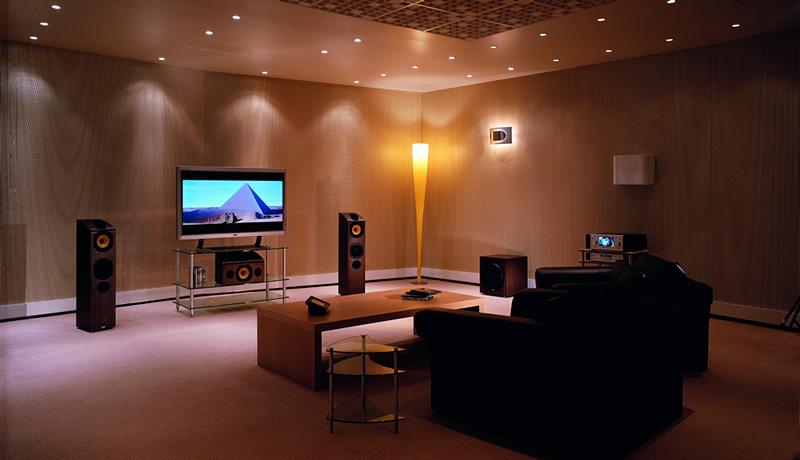 On top of this, home theaters give you a movie theater experience every night of the week with movies that actually interest you. The days of waiting months for a movie that intrigues you to come out are gone.
On top of this, home theaters give you a movie theater experience every night of the week with movies that actually interest you. The days of waiting months for a movie that intrigues you to come out are gone.
2. A Luxury Everyone Deserves
A recent study by OnePoll found that 55% of Americans watch TV to unwind at the end of the day. It is unsurprising then that Americans also spend around 3 hours daily watching live TV, streaming services, or sports games. So why not make the most of this time? Home Theaters give you high-end sound quality, capture every inch of an image, offer incredible comfort, and are a luxury everyone deserves.
Aside from giving you a high-quality experience every time, home theaters add to your personal image and make your home stand out, especially if you are willing to spend more on high-end theater seating. And if you’ve ever dreamt of your home being the central meeting place for all your friends and family, a home theater is definitely a feature that will have them knocking on your door. A Home Theater is always the envy of all!
A Home Theater is always the envy of all!
3. Streaming Services Let You In on the Newest Releases at Home
With movie theaters, a lot of time is spent waiting for big releases to come out. Then, once the movie is out, you have to wait a couple of more days so you aren’t jammed into a packed theater, breaking your neck in the second row. A.k.a., so you can actually watch comfortably. The good news is that many major releases happen on streaming platforms these days. There’s no competition for movie tickets or optimal seating, when you can watch these films from the comfort of your own home. A prestigious home theater is the best way to add to the “premier” experience.
4. Movies, Gaming, & the Big Game
The best part of home theaters is that they aren’t just a luxury for movie aficionados. Sports lovers and gamers alike can enhance their experiences with a home theater. Home theaters are a versatile spaces where you can enjoy Super Bowl parties, gaming with friends, or have family movie nights.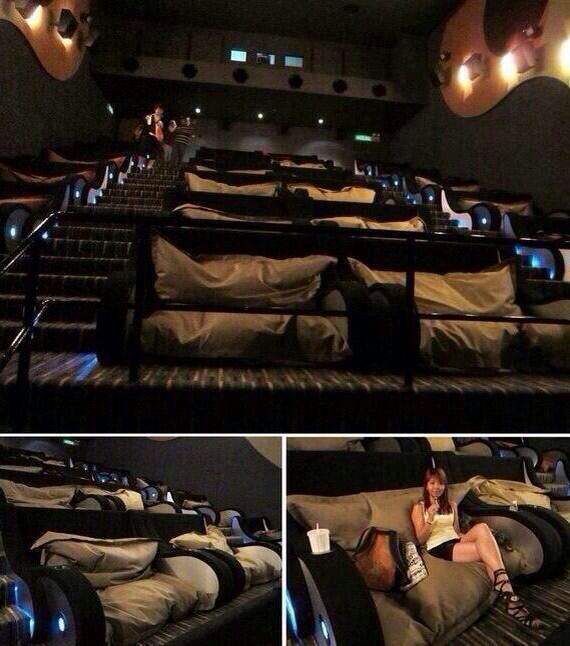 Big picture visuals are sure to enhance any of these digital viewing experiences.
Big picture visuals are sure to enhance any of these digital viewing experiences.
5. A Personalized Space
Home Theaters are a great opportunity to show your creativity. Unlike other rooms in a home that somewhat follow a similar decor theme, a home theater’s cinematic and entertainment use makes it a fun space to showcase your coolest design ideas and interests. For a little inspiration, check out our article about home theater themes. Round out your space with Valencia’s Theater Seating too, and elevate your home theater’s luxuriousness and personalization.
6. Increase Your Property Value
The most practical reason to install a home theater is that it will increase your property value. In almost 80% of luxury homes these days, there is a home theater, making home theaters not just a want, but an expectation. It is also important to consider whether buyers in your neighborhood look for this feature, as this will up your home’s value even more.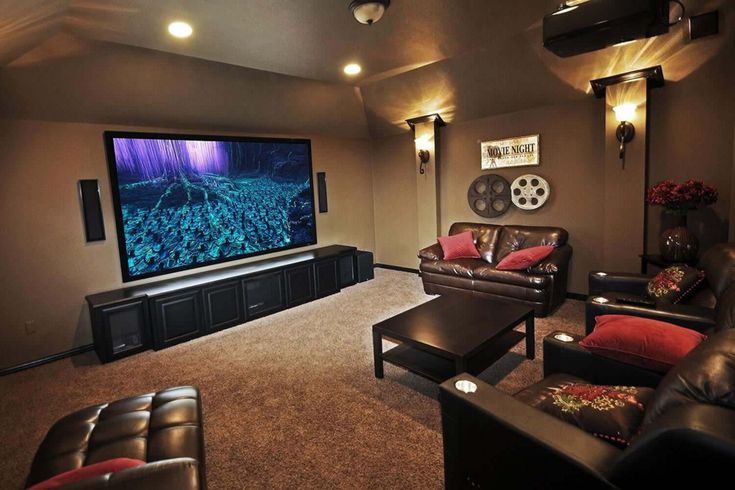 And one last pro tip, if you want to increase your theater’s value even more, include risers. Check out more tips here.
And one last pro tip, if you want to increase your theater’s value even more, include risers. Check out more tips here.
So what are you waiting for? Install a home theater and join the luxury home movement sweeping the nation!
Are Home Theaters Still Popular? - 3 Reasons
Sometimes taking a trip to the movies can seem like a hassle, and over time it can get quite expensive. If you own a home theater, this could essentially solve any problems with going to the movies, with many more additional benefits. Owning a home theater means can be seen as a worthwhile investment.
Sometimes owning a home theater goes beyond improving the quality of entertainment in your home, as a whole, it can make your home seem more desirable. However, this usually depends on many factors, and you will have to do your research correctly if you’re looking to make money back on a home theater.
Answer: Home theaters are worth it for many reasons, they add value to your home especially if you live in a high-end neighborhood.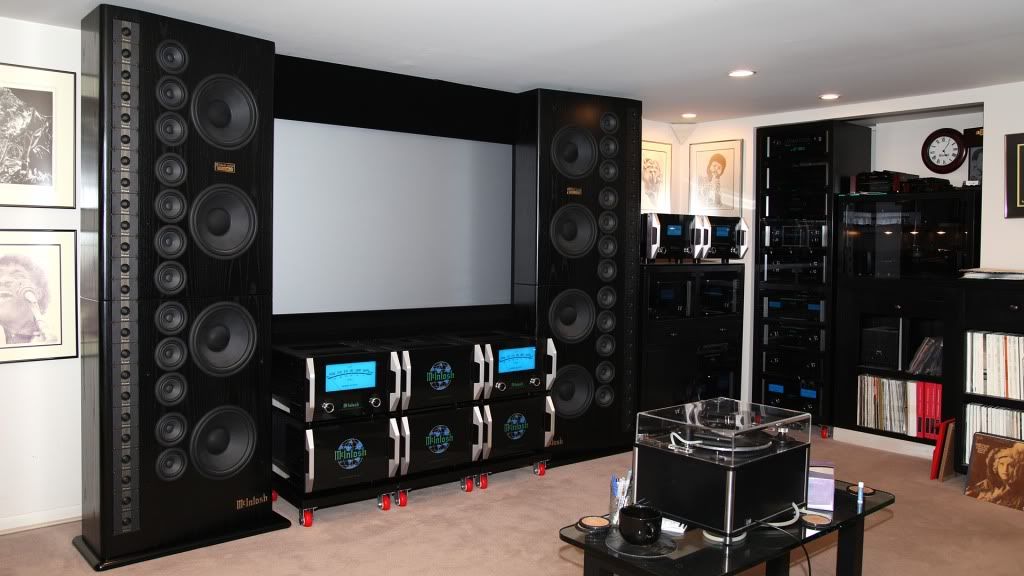 Besides adding value to your home, they also add value to the entertainment quality of your home featuring massive displays and high-quality surround sound systems.
Besides adding value to your home, they also add value to the entertainment quality of your home featuring massive displays and high-quality surround sound systems.
Page Contents
- 1 Home Theaters Can Add Value
- 2 The Vastly Improve The Cinematic Experience
- 3 Home Theaters Are For Family And Friends
- 4 What Goes Into Building A Home Theater?
- 5 The Display Has A Huge Impact
- 6 Surround Sound Setups
- 7 Seating Options
- 8 Verdict
With the addition of home theaters, some homes can actually rise in price due to them becoming more desirable. This usually holds true if the home theater is present in a high-end neighborhood, this is because 80% of homes in a high-end neighborhood feature a home theater setup.
This is because many affluent people tend to use home theaters as a solution to a problem, having a home theater can increase the value of your home and you also do not need to go to the movies especially if they’re too far.
If you’re looking for a home theater to increase the value of your home, you will need to take the design seriously, the value of the home theater is often unpredictable as it depends on how the overall design is perceived.
Another way to think of it, it doesn’t matter if you spend a lot of money on the home theater, you can spend thousands on the highest quality equipment. What really matters is the quality of the home theater, the personality it adds to the home, and the practicality it offers.
If you’re serious about investing in a home theater, don’t focus too much on the technical side of things as this doesn’t really matter. Focus on adding a luxurious touch to things such as adding lights, fireplaces, premium materials, and textiles.
When setting up a home theater setup, the general rule of thumb is that you will get at least 65% of your investment back on the original cost. This means if you spend £15000 on a home theater setup, you should get at least $9750 back.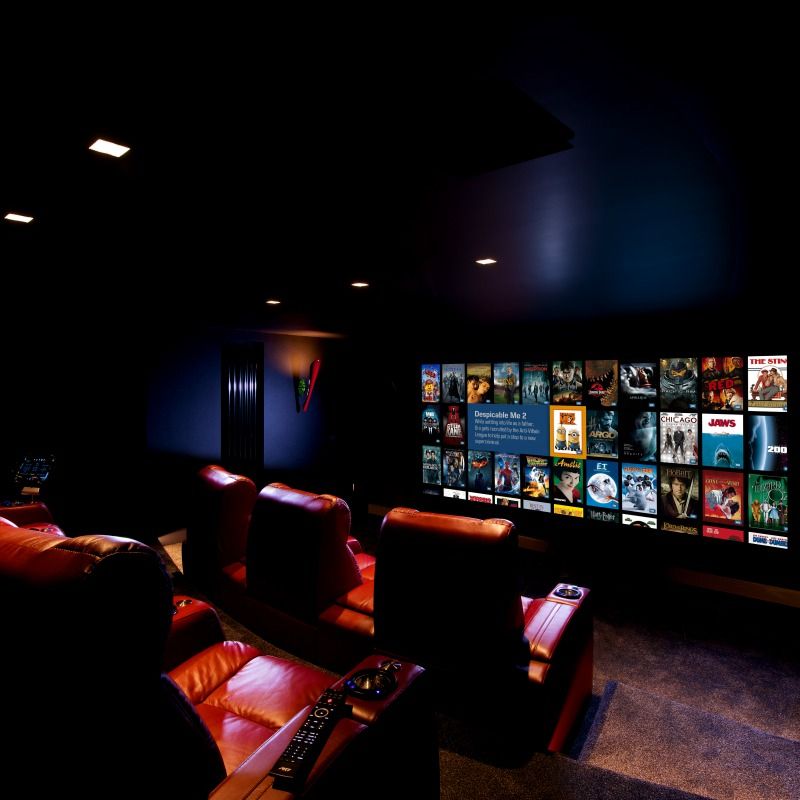
Besides adding value to the home, home theaters can improve the cinematic experience to the point where it’s identical to a real theater. You also have complete control over the quality of the experience, so you’re able to tailor it to your desires.
You have a wide selection of displays, this is a huge benefit if you know exactly what you’re looking for as not all display types will operate the same. If you’re looking for an authentic theater/cinematic experience, we recommend going with a wide projector.
Or you could be someone who fancies a bit of immersion, this can be achieved by using a high-quality OLED display. OLED displays are able to provide “infinite contrast ratios” which can hugely improve the cinematic experience.
Contrast ratio is extremely important for many types of content, it works by enhancing the brightest and darkest points in a specific scene.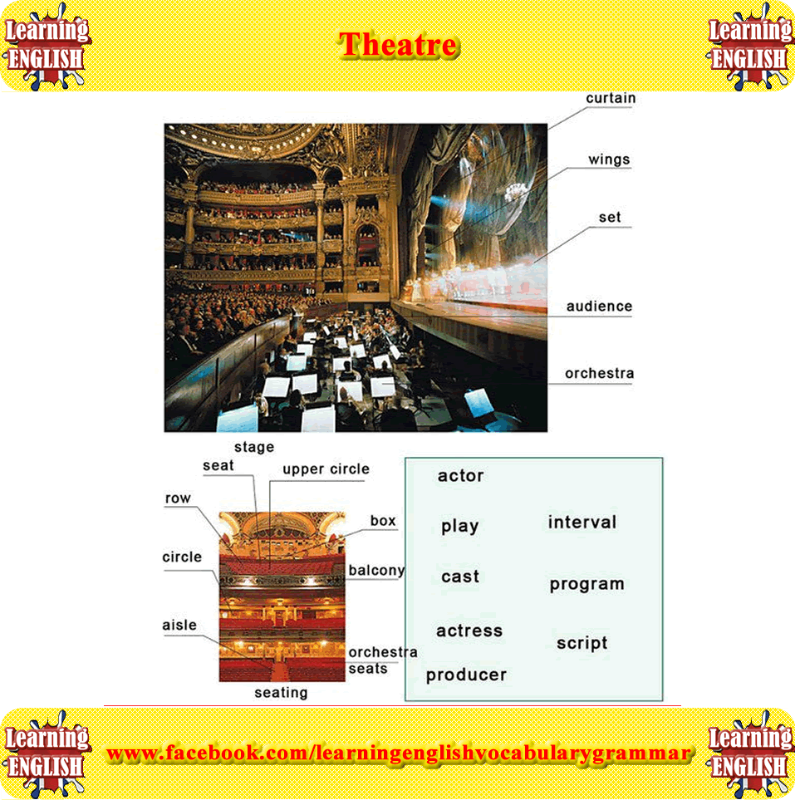 What this aims to do is reach a level of realism by highlighting details that would otherwise go unnoticed. High contrast ratios can also improve HDR content.
What this aims to do is reach a level of realism by highlighting details that would otherwise go unnoticed. High contrast ratios can also improve HDR content.
Besides the display types, the sound quality is another key factor of immersion, for the best cinematic experience we recommend a surround sound setup. When setting up a surround sound system, usually involves a few speakers and a subwoofer.
Like most home theaters, they are present in massive high-end rooms therefore surround sound is ideal for them. A typical surround sound setup is the 5.1 setup which means you will have 3 front speakers and two rear speakers with one subwoofer which can be placed anywhere. Another benefit of surround sound is that they offer an authentic cinematic experience.
Home Theaters Are For Family And FriendsA home theater setup can be perfect for your family and friends, home theaters will provide a more comfortable/homely environment for watching movies which a normal theater will not be able to offer.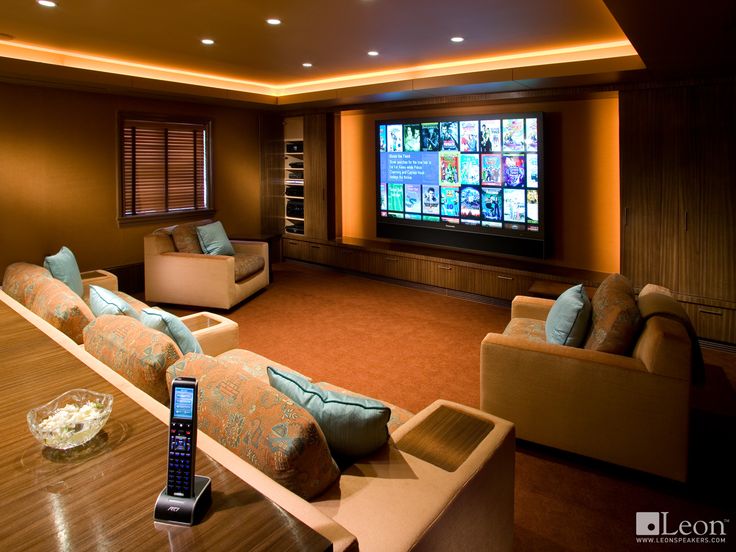 Here you can expect a lot of bonding to happen which is unlikely to happen with strangers.
Here you can expect a lot of bonding to happen which is unlikely to happen with strangers.
A benefit that shouldn’t be overlooked is the fact that the home theater is located inside your house, which makes it easily accessible.
This means it essentially takes a few steps to enter a room full of immersion, you can expect a lot of family and friends to take advantage of this ability.
And when you’re not watching movies, your home theater can be used to play games, yes they are versatile systems. Home theater gaming can be pretty great if you’re using an OLED display as they have fast response times.
You can choose to play your favorite games with your friends and family, and the huge television and surround-sound system are likely going to make the experience unmatched.
To get the most out of your home theater setup, let’s not forget seating as this can have a huge impact on the levels of immersion. Make sure to have many seating options for your friends and family
Uncomfortable seating will likely make your home theater unpleasant which is the last thing you will want.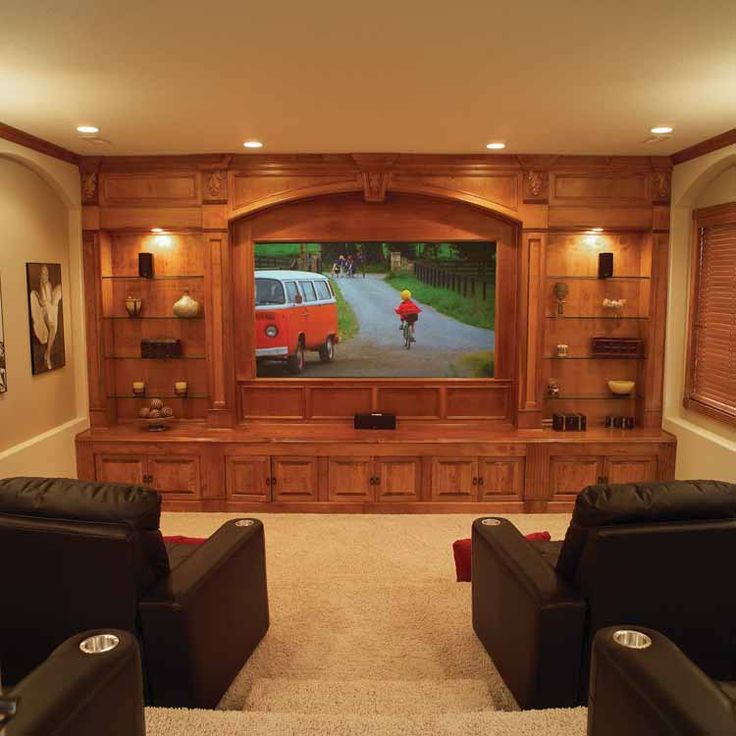 Couches, beanbags, and comfy chairs can go a long way
Couches, beanbags, and comfy chairs can go a long way
There are a few things that go into building the best home theater setup possible, this includes having the right display, viewing angles, and audio equipment.
Once you get all these aspects sorted, you should have a working, immersive, and hopefully enjoyable home theater setup.
Just keep in mind to follow these good practices for the best experience that will add a lot of value to the home. At the lowest end of the spectrum, you can expect to spend around $500, and on the high end you can spend around $30000 so there’s a lot to choose from.
The Display Has A Huge ImpactWhether you’re going down the TV or the Projector route, there is one thing that is universal and that is the viewing distance of your display. Generally, the larger your screen, the further back you can sit, but this is an overly simplified explanation.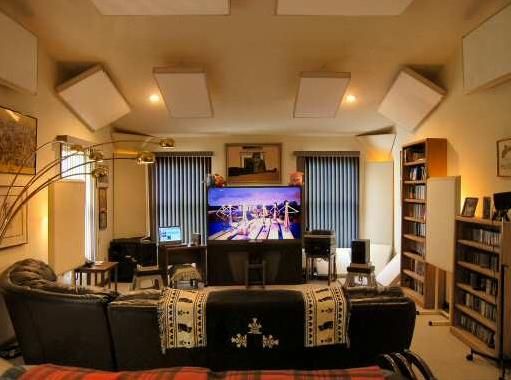
The most typical aspect ratio is the 16:9 aspect ratio, and by SMPTE, the optimal viewing angle is said to be around 30 degrees. This means the screen should cover your field of vision by at least 30 degrees, following this rule will massively improve the viewing experience of your home theater.
Calculating the viewing distance requires you to measure the diagonal length of the screen in inches and then multiply it by 1.6. This will give you the optimal distance between you and the screen in inches, there is an online calculator you can use to measure the viewing distance.
The main objective at hand here is to sit at a distance that isn’t too hard to see and not too close that you need to turn your head. This influences the size of your screen as well as the seating positioning.
If you know what distance you would like to sit at, then we can calculate what the correct TV size is for the 30-degree viewing angle. To calculate the recommended display size, the formula is simple, you multiply the viewing distance by 0.6, and you should find the optimal display size that roughly fits the 30-degree viewing recommendation.
To calculate the recommended display size, the formula is simple, you multiply the viewing distance by 0.6, and you should find the optimal display size that roughly fits the 30-degree viewing recommendation.
| Viewing Distance (ft) | Recommended TV Size (In) | Viewing Angle |
|---|---|---|
| 4.3 | 32 | 30° |
| 5.7 | 42 | 30° |
| 7.5 | 55 | 30° |
| 8.8 | 65 | 30° |
| 10.2 | 75 | 30° |
| 11.2 | 83 | 30° |
| 13.3 | 98 | 30° |
The idea behind surround sound is to provide an immersive sound experience as well as help everyone else enjoy the experience. No matter where you’re sitting in the room, you should experience similar amounts of immersion.
Most home theater rooms can do just fine with a 5.1 setup, it is definitely worth trying this setup initially unless your room is too small. However, most high-end home theater rooms should be able to support the 5.1 surround sound setup.
If your room is too big that the 5.1 surround sound setup isn’t as effective, then you will need to go with the 7.1 surround sound setup. This usually means adding two extra speakers at the back, 5.1 and 7.1 systems are better than each other, it just depends on the situation(room size).
If your room is pretty small, you should stay away from 7.1 surround sound setups, or any setup which is to overkill. This is because if your room is too small, there can be adverse effects such as overpowering the rear speakers. this can make voices harder to understand.
| Room Size | Recommended Surround-Sound Setup |
|---|---|
| 350 sq ft | 5.1 Surround Sound |
| 350 sq ft+ | 7.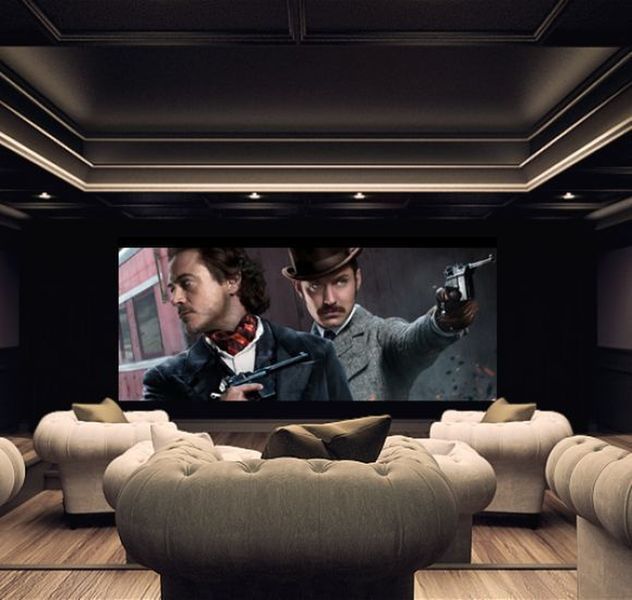 5 Surround Sound 5 Surround Sound |
The seating should never be overlooked especially when you’re trying to add value to the home, having luxurious seating options will mean that the value of your home will potentially be higher, just ensure that the seating options have a decent style.
You can often get away with a sofa, beanbags, and comfy chairs if you’re not trying to break the bank, this means that your home theater may not add as much value, but it can be a great option besides financial investments.
Just ensure before implementing any seating options you take the viewing distances and angles into consideration, poorly placed seats mean that your viewing experience won’t be as immersive. This is mainly due to the fact that you may not see the screen, or you may have to physically turn your head.
VerdictIn conclusion, home theaters are definitely worth it, they’re great setups that add plenty of value to your home if you know what you’re going for. However, if you’re more interested in a great experience, your friends and family can benefit from the accessibility the home theater can offer.
However, if you’re more interested in a great experience, your friends and family can benefit from the accessibility the home theater can offer.
Home theater: the effect of presence - Delo.ua
What is the first thing that comes to mind when you mention the effect of presence while watching a movie? It would seem that the most important thing here is a large TV
We continue to fight the occupier on the information front, providing only verified information and analytics.
The war deprived us of the opportunity to earn money, we ask for your support.
Support delo.ua
What is the first thing that comes to mind when you think of the presence effect while watching a movie? It would seem that the most important thing here is a large TV. In fact, while an impressively large LCD or plasma panel affects viewing pleasure, this factor is not able to make the viewer feel like a part of the movie.
The sound system influences the viewing experience much more, by which the concept of home cinema is mainly meant.
One of the interesting home theater models of 2014 from PIONEER
Subscribe to our YouTube channel
Types of home theaters - which is better?
There are several types of home theater systems that vary in quality, features and price.
- Turntable with built-in amplifier
This home theater is a primitive version of this kind of technology. The speakers for it need to be purchased separately, and the sound quality, regulated by the receiver built into the player, leaves much to be desired. Such home theaters are not very popular among the population because they only support two-channel mode. Although this option is the cheapest, surround sound lovers should look for a more expensive device.
- Turntable with separate speaker system
This unit comes with a separate speaker system, often of poor quality. The amplifier here is also built into the player, which still affects the purity of the sound. The audio system placed on the periphery produces a more or less normal sound with no depth, which is present in Hi-end home theaters. Due to the low price and ease of installation, this type of device is quite popular. Such "boxed" home theaters play only CD / DVD format, which cannot but upset - you cannot watch high-quality films with their help. But they support multi-channel sound.
The amplifier here is also built into the player, which still affects the purity of the sound. The audio system placed on the periphery produces a more or less normal sound with no depth, which is present in Hi-end home theaters. Due to the low price and ease of installation, this type of device is quite popular. Such "boxed" home theaters play only CD / DVD format, which cannot but upset - you cannot watch high-quality films with their help. But they support multi-channel sound.
- Component home theater
This type of home theater is quite expensive, but also the most advanced from a technical point of view. This is due to the relatively high quality of all parts of the system. In component systems, the receiver, speaker system and player are separated from each other, which makes it possible to place them around the room. Such devices stand out from the rest with high sound quality at all frequencies. In addition, at the moment, most models of players of this type of audio technology support both Blu-ray and HD DVD video formats and HDMI connectors, which provides a strong movie experience with high-quality sound.
In addition, at the moment, most models of players of this type of audio technology support both Blu-ray and HD DVD video formats and HDMI connectors, which provides a strong movie experience with high-quality sound.
Home theater main components
- Turntable
There are different types of turntables. With the constant improvement and invention of new types of information media, the playback devices are also changing. CD / DVD players are already considered obsolete by many fans of home viewing, since the disks used by these devices simply do not have enough capacity to record high-quality movies, because the "memory" limit for single-sided CDs is 700MB, and for DVD - 8.5GB.
- Receiver (amplifier)
There are two types of receivers - a stereo receiver (two-channel), and an AV receiver (multi-channel). A two-channel amplifier is currently obsolete, which cannot be said about a multi-channel one. The latter allows you to amplify the sound by regulating the oscillations of sound waves.
A two-channel amplifier is currently obsolete, which cannot be said about a multi-channel one. The latter allows you to amplify the sound by regulating the oscillations of sound waves.
- Speaker system
As in the case of amplifiers, loudspeakers are available in two-channel and multi-channel configurations. Stereo systems can't compete with speakers like 5.1 and 7.1 because they only have two speakers.
5.1 systems have a subwoofer and 5 speakers: right, left, center, and surround right and left. 7.1 systems differ from them in that they require two additional surround back speakers.
Based on materials from the online store of household appliances 5ok.
New video
Video
Helpers for the front from Rossland: the story of a blacksmith who forged acting props into knives for Ukrainian soldiers
Subscribe to Delo. ua
ua Home theaters and Hi-Fi stereo systems on ON-OFF-ON.RU
Matthew Polk and George Kloepfer founded Polk Audio in 1972. Their goal was affordable to the average consumer excellent quality speaker systems. Polk Audio was one of the first to actively use advanced scientific developments, which allowed them to soon create unique acoustic speakers and achieve recognition in the global audio market. They began to be called acoustic specialists.
| |
To date, Polk Audio has patented more than 50 of its own scientific developments in the field of acoustics. The company is located in the USA in Baltimore (Miriland), but Polk Audio products are known all over the world. Household and car speakers are successfully sold in more than 50 countries, including popular ones in Russia. The company has won many awards and has been awarded many times for high-quality innovative developments and advanced technologies.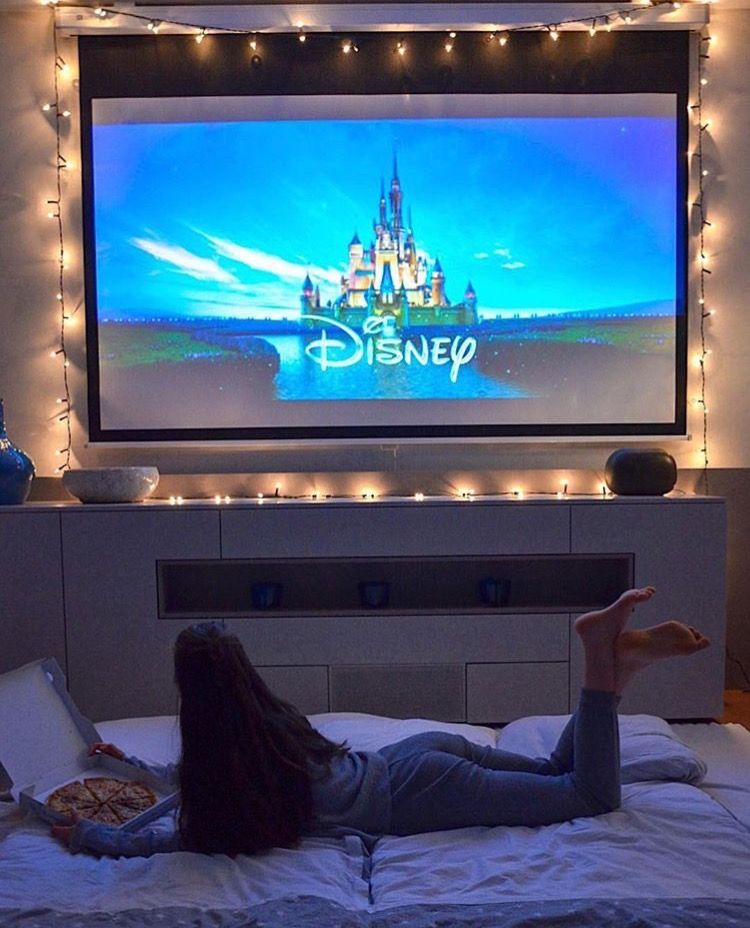
Time shows that if you choose the right path from the very beginning, then success is guaranteed. This is also proved by the story with one of the largest American brands - Polk Audio. A company that has gone from being a handful of educated enthusiasts to being the leader in speaker sales in the US. And here's how it was.
In 1971, Matthew and George were hand-assembling custom-made speakers to sound large spaces. It wasn't Polk Audio yet, but that was the foundation for years to come.
| |
1972 delighted the world with the appearance of the film "The Godfather" and the hockey "Super Series", the first official visit to the USSR by American President Richard Nixon and the start of the company, which eventually grew into one of the world's leaders in the production of acoustic systems.
| |
Three friends Matthew Polk, George Kloepfer and Sandy Gross, like many at the time, were completely unhappy with what the huge American stereo market was offering.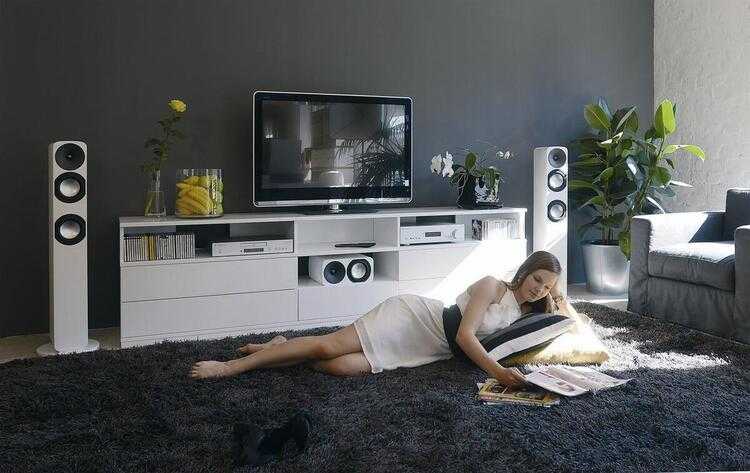 What was available couldn't even play music reasonably well, and good systems were too expensive. Small American companies also paid little attention to the appearance of their products. There was nothing left to do but simply create new systems ourselves. All three had interesting original solutions, higher technical education, and a good ear with an awareness of how it should sound, which gave the prerequisites for a successful project. Taking as a basis the slogan "Good sound should be affordable", the company is still steadily following it. Indeed, if you take any Polk Audio product, you can clearly see the same high attention to the main five consumer properties: sound quality, workmanship, design, applied technologies and price, which remains within reasonable limits. No device can be very cheap, because this will affect the other four qualities for the worse. One of the important components was the creation of our own development and design center using computer and scientific tools.
What was available couldn't even play music reasonably well, and good systems were too expensive. Small American companies also paid little attention to the appearance of their products. There was nothing left to do but simply create new systems ourselves. All three had interesting original solutions, higher technical education, and a good ear with an awareness of how it should sound, which gave the prerequisites for a successful project. Taking as a basis the slogan "Good sound should be affordable", the company is still steadily following it. Indeed, if you take any Polk Audio product, you can clearly see the same high attention to the main five consumer properties: sound quality, workmanship, design, applied technologies and price, which remains within reasonable limits. No device can be very cheap, because this will affect the other four qualities for the worse. One of the important components was the creation of our own development and design center using computer and scientific tools.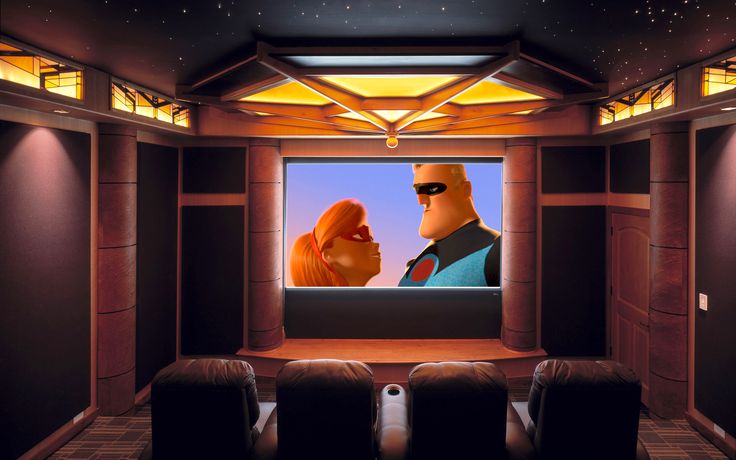
In 1973, friends set up production in a private house.
| |
In 1975, the Model 7 was released - a classic large three-way shelf model that quickly gained popularity among music lovers and audiophiles. The following year, a larger version appeared - Model 9, which had as many as two midrange speakers. At the beginning of the new decade, Polk Audio already has a serious production area.
| |
In the mid-80s, Matthew Polk became interested in research in the field of sound formation and created the SDA - Surround Dimension Array system, which was reflected in the legendary top-end SDS-SRA system.
| |
The approach and the result were so unexpected and unusual that the company was excluded from the American audiophile community for almost 15 years.
The following year, Polk Audio created a small line of smaller models based on the SRS-SDA. The development team continued to work on different loudspeakers, always following the motto.
| |
In 1990, on the rapid wave of development of home theaters, a line appears, which is called the Reference Theater. (RTA).
The following year, the fifth generation of SDA systems enters the market, which, despite all the obstacles, finds its admirers.
| |
1997 is the year of the birth of the legend in the form of an incomparable updated RT series. The use of active woofers in top-end floorstanding models made it possible to do without a separate subwoofer in relatively small rooms. The use of specialized dipole-bipolar rear speakers has become almost the standard for Polk Audio cinema sets to this day.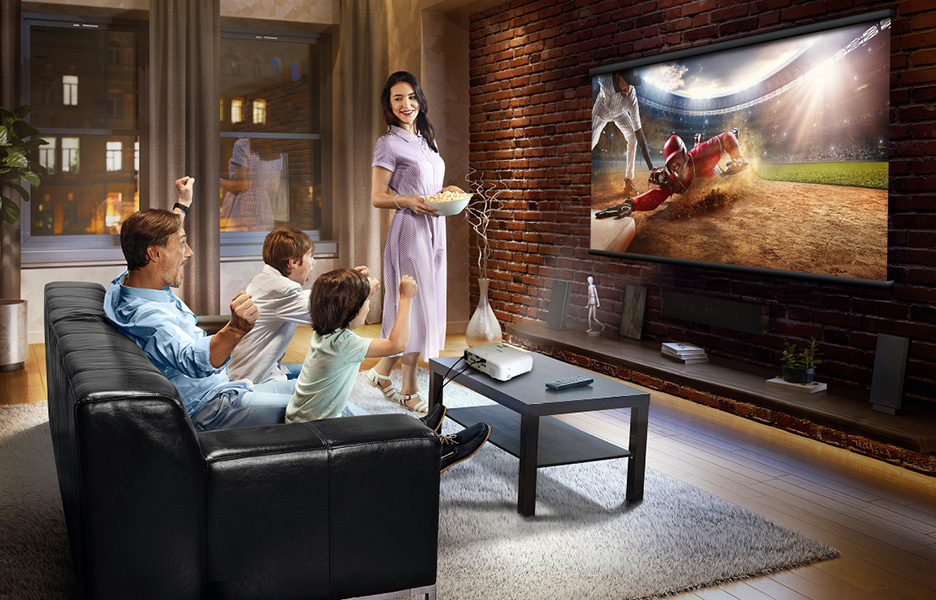 The huge center channel made you forget about slender dialogues, truly arranging a large-scale and balanced sound field with other speakers. The appearance of another proprietary invention - Power Port - made the bass unexpectedly deep and legible with small dimensions of the speakers. RT has become one of the few reference audio systems for home theater and multi-channel audio systems, while being very affordable for such capabilities. At the end of the century, another legend appeared - Polk Momo MM6 car speakers, (photo 1999-1) which for many years became the hallmark of the world of Car Audio. At the same time, a complete solution in the field of one-box home theaters appears in the form of the RMDS model with the “expensive” and “thoroughbred” sound inherent in Polk Audio, which is still not found in this class of equipment.
The huge center channel made you forget about slender dialogues, truly arranging a large-scale and balanced sound field with other speakers. The appearance of another proprietary invention - Power Port - made the bass unexpectedly deep and legible with small dimensions of the speakers. RT has become one of the few reference audio systems for home theater and multi-channel audio systems, while being very affordable for such capabilities. At the end of the century, another legend appeared - Polk Momo MM6 car speakers, (photo 1999-1) which for many years became the hallmark of the world of Car Audio. At the same time, a complete solution in the field of one-box home theaters appears in the form of the RMDS model with the “expensive” and “thoroughbred” sound inherent in Polk Audio, which is still not found in this class of equipment.
| |
Millennium brings Polk Audio back into the American audiophile community with yet another legend, the LSi9 bookshelf speakers. This system occupies the same position as the Model 9 in 1975, only this time - in the top line.
This system occupies the same position as the Model 9 in 1975, only this time - in the top line.
The legend was reflected in production - the entire LSi line was produced for almost 10 years: the last speakers were shipped from the factory warehouse in 2010. On the basis of home LSi, an uncompromising car speaker system of the SR series was created, which also became legendary.
| |
In the middle of the 2000s, devices such as soundbars were actively developed, and in their products Polk Audio uses the developments of the mid-80s - the SDA system, creating serious competition for Japanese and European manufacturers.
| |
And finally, in 2011, a modern legend came out into the world - the LSiM line, which absorbed all the many years of experience of the company. At the same time, the production program includes a huge range of traditional and built-in speakers, automotive components, as well as headphones, soundbars and a novelty of recent years - the Omni multi-zone wireless audio system. Polk Audio is responsive to the needs of the home entertainment market.
At the same time, the production program includes a huge range of traditional and built-in speakers, automotive components, as well as headphones, soundbars and a novelty of recent years - the Omni multi-zone wireless audio system. Polk Audio is responsive to the needs of the home entertainment market.
| |
During its existence, the company logo has undergone two changes. The original was cut out of cardboard with scissors by Kloepfer back then, in the garage. Then there was a strict nameplate in the style of "Hi-Fi". In 2012, the last transformation of the logo in the style of modern trends took place.
To date, Polk Audio is one of the few manufacturers that has its own acoustic laboratory, specialized software (including the Klippel distortion tracking system) and more than 70 patents in the field of loudspeaker production. As before, the development of absolutely all products is carried out in the USA.

